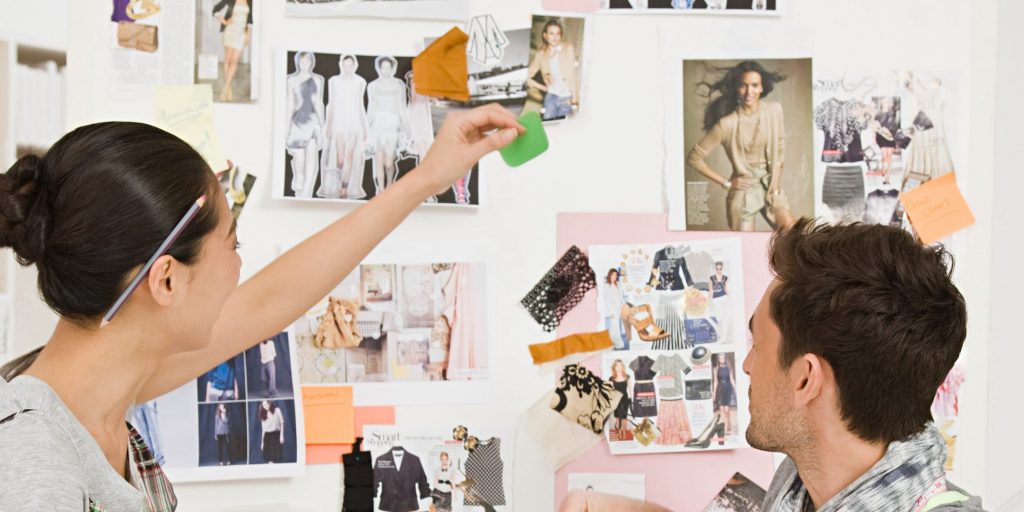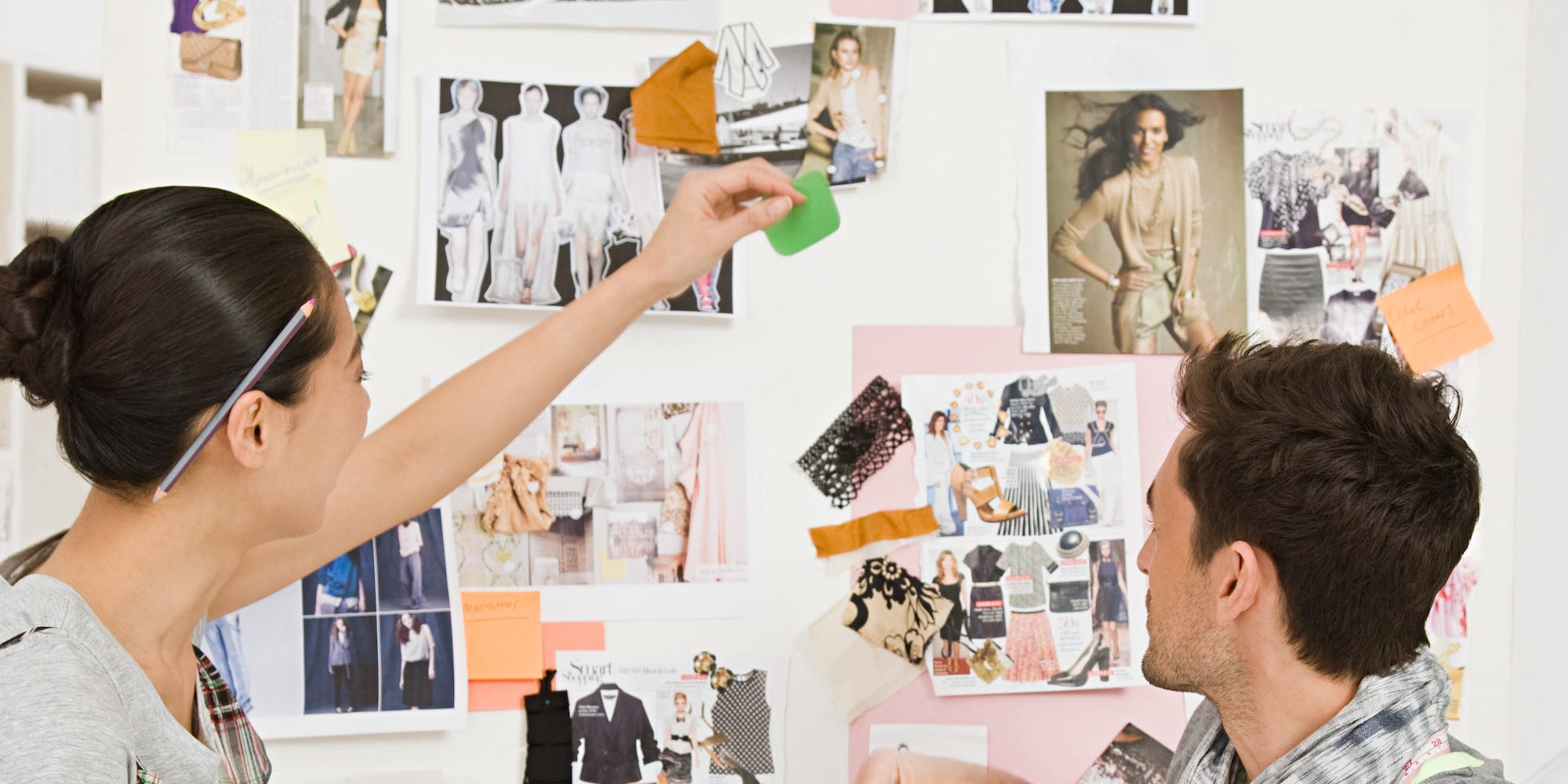
Image Source/Getty Images
- A mood board is a group of images, text, designs, and more that help convey an emotion, feeling, or idea.
- You can create a digital mood board easily using websites like Pinterest, MoodStream, or Canva.
- Mood boards are great for personal use, but can be used in professional settings as well.
- Visit Insider's Tech Reference library for more stories.
If you've ever made a collage using images clipped from a magazine or pinned Pinterest images, you've probably made a mood board.
Here's everything to know about mood boards, including how to create one, and how to use it.
What is a mood board?
Mood boards are, simply, groups of pictures, words, colors, designs, and more, usually put onto a single page. They're meant to convey a "mood," but that can be anything from a specific emotion to a professional business pitch. And they're a fun way to organize your ideas and show your personal aesthetics.
They come in all shapes and sizes, from physical mood boards with images pinned on to digital collages with links and sounds.
Mood boards can be used in a variety of situations, from planning a wedding to designing a house to building a brand. They're commonly used by graphic designers, interior designers, photographers, and other creative types to convey a general style when working with clients.
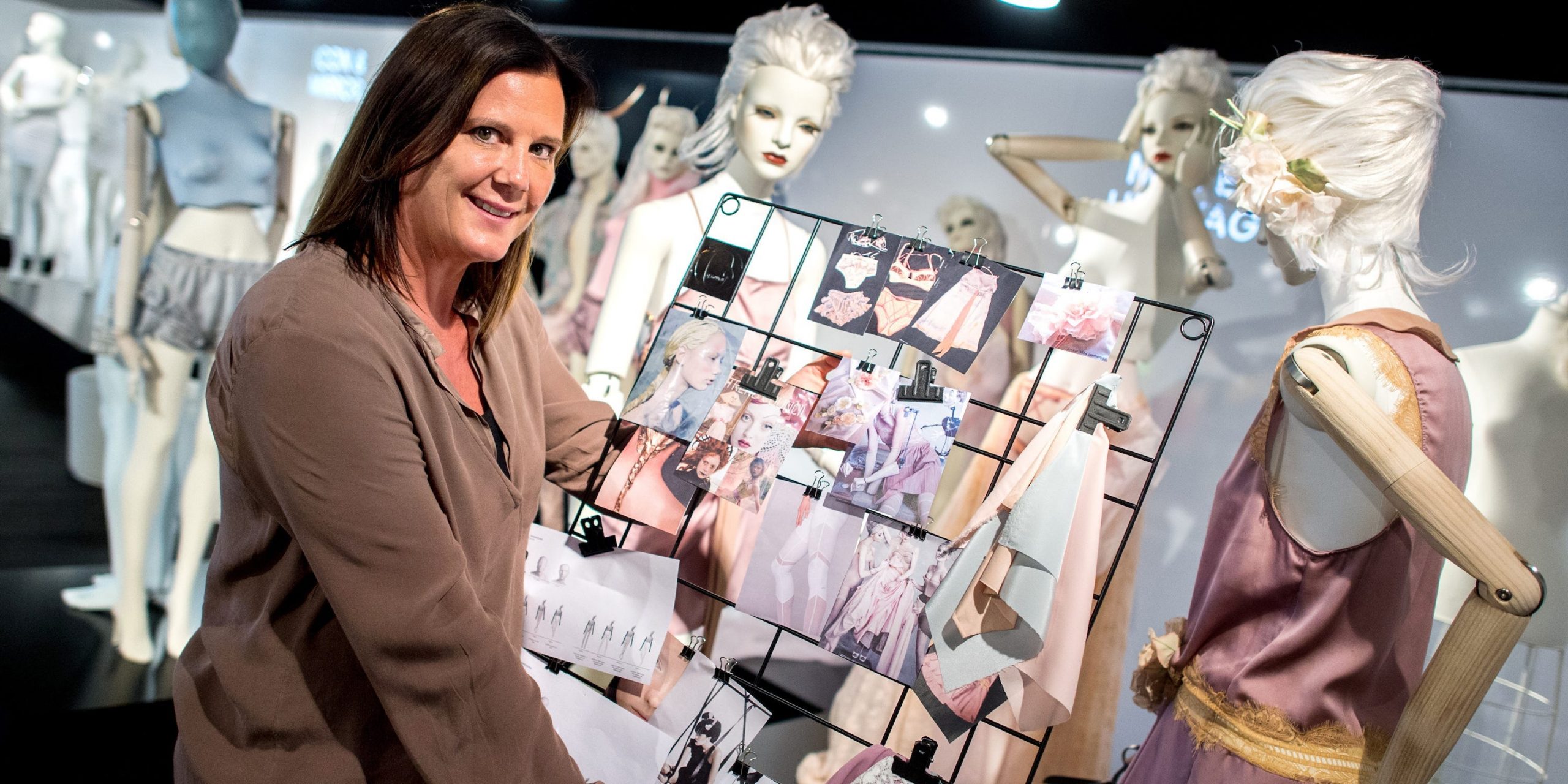
Picture Alliance/Getty Images
Mood boards are a great collaborative tool because they help keep everyone on the same page when it comes to the project's vision. For example, a mood board for a new doughnut shop can be used to help choose the interior design, the logo, the font used on the menu, social media messaging, and more.
How to make a mood board
While there isn't one "correct" way to make a mood board, there are a few standard ways to go about it.
You can choose to go old-school, for example, and grab a foam board, scissors, and some magazines. Or you can take a digital approach with the help of websites like Pinterest, MoodStream, or Canva.
Compile images, fonts, and other elements for your mood board that you feel highlight the general concept, mood, or idea you're trying to convey. When searching for images on the web, you can start with a theme, keywords or phrases, or a color palette to get to relevant images faster.
You may end up with more images than you need at first, and that's fine. When it comes to fine-tuning your mood board, weed out the elements that don't necessarily communicate your vision. On websites like Canva, you can choose a template to create your mood board and simply drop in the images you've chosen. On Pinterest, you can add photos to multiple boards while browsing the platform.
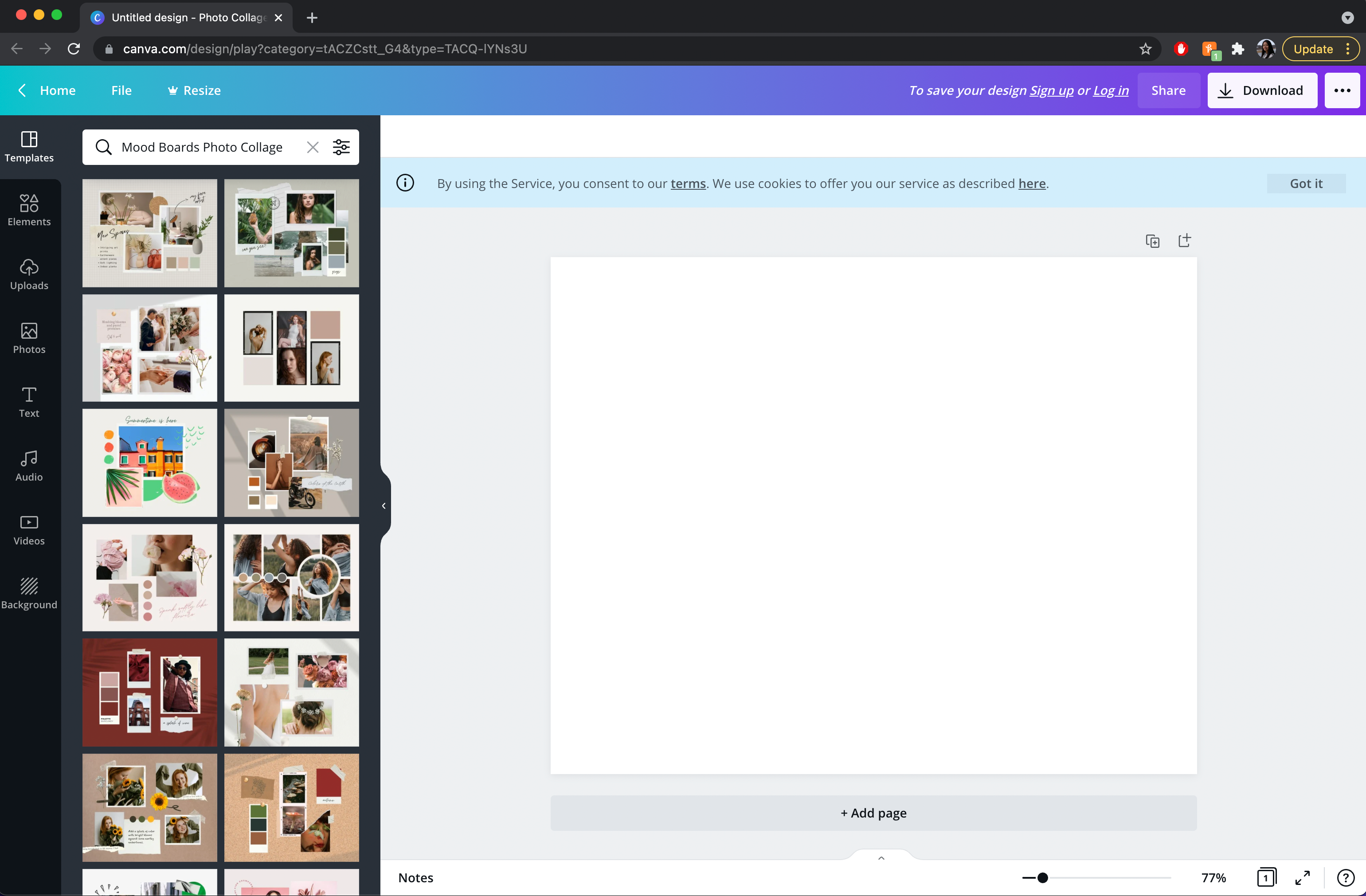
Abigail Abesamis Demarest/Insider
Tips for creating a mood board
Create more than one mood board
If you're making a mood board to present to a client, consider making more than one.
By presenting multiple distinct concepts, the designer and client will be able to fine-tune the vision before the designer invests a large chunk of time in a concept that might not be what the client is looking for.
Don't limit yourself
Don't be afraid to go beyond whatever field you're working in. You don't have to be literal when creating a mood board and can use a variety of imagery to convey your ideas.
For example, if you're making a mood board for an interior designer, it can include serene landscapes or whimsical scenes that convey a particular mood in addition to photos of other homes and furniture.
Keep it organized and concise
There may be a lot of different ideas bouncing around your brain, but if you're collaborating with others, being clear and concise will help keep your vision intact. Ensure that each visual element included in your mood board actually says something about your idea (and isn't just a cool picture you found that you really like).
Add in explanations as needed
Mood boards can include text as well as images. Clarifying your visual choices with words can help make your mood board more easily understood.
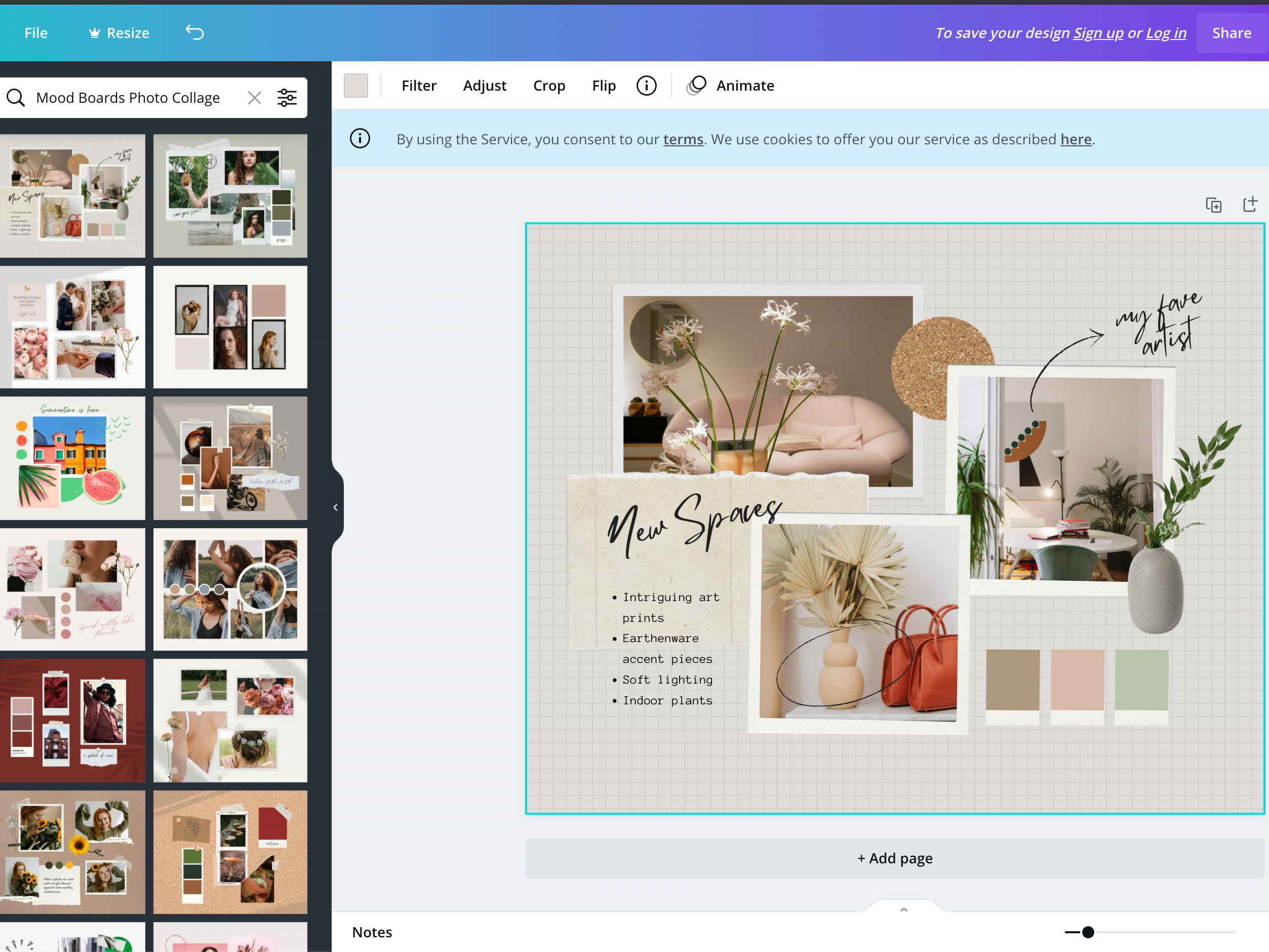
Canva
